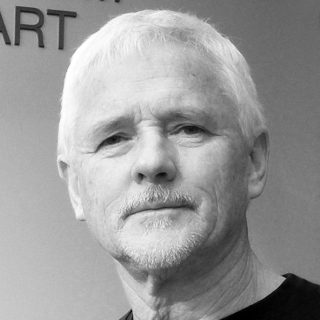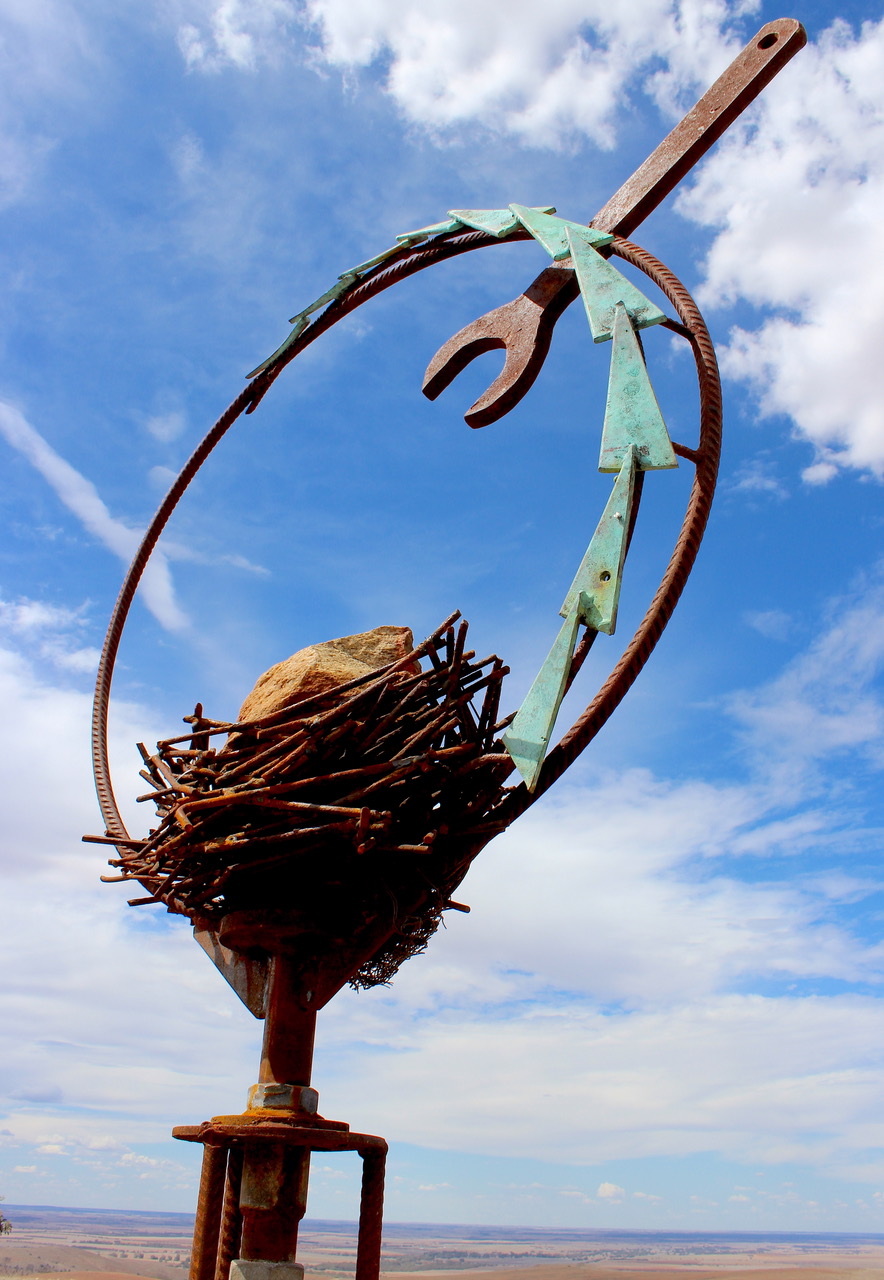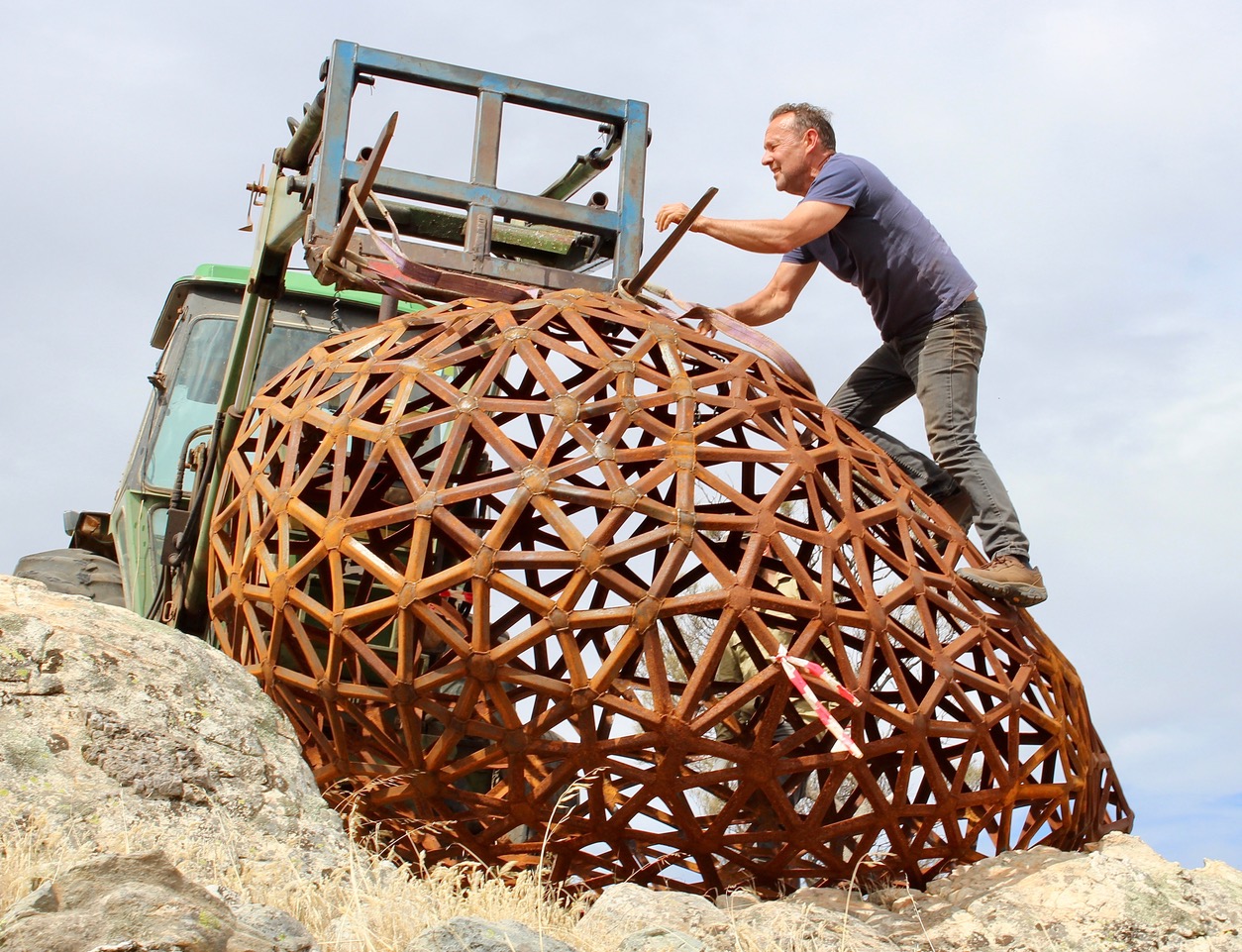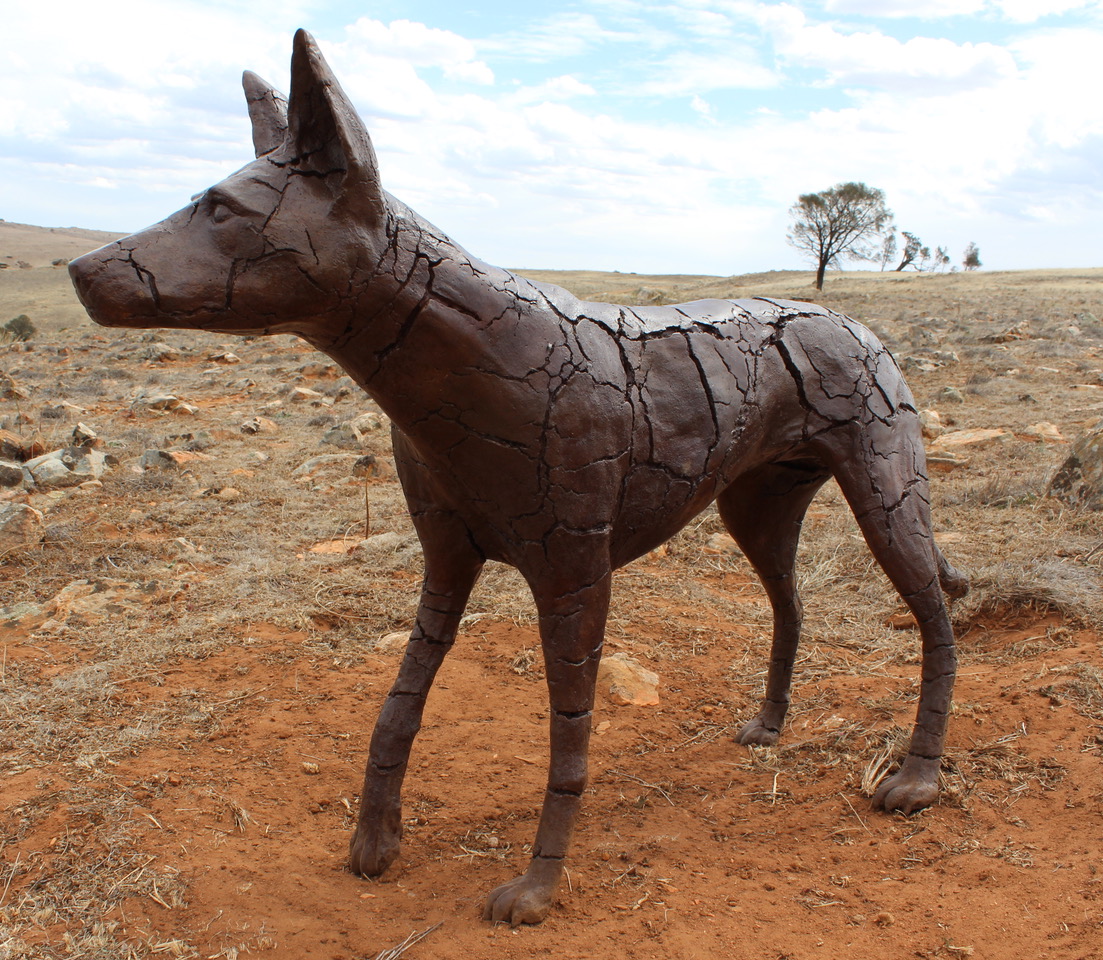
John Neylon
John Neylon is an award-winning art critic and the author of several books on South Australian artists including Hans Heysen: Into The Light (2004), Aldo Iacobelli: I love painting (2006), and Robert Hannaford: Natural Eye (2007).

This unique sculpture exhibition, held in the windswept and barren landscape of Palmer, forces artists, artworks and visitors to contend in a very direct way with the demands of the environment.
For a certain kind of sculpture to be made, places like Palmer need to exist. The primary reason? It has to fight for survival. When it comes to art, Palmer is a hostile environment. Each work sited here has to grapple alone with demanding terrain rather than lean on others for visual support in more curated surroundings. Importantly they all have room to breathe. The end result is that the viewer has multiple opportunities to engage.
Approaching Carlotta Brunetti’s Drops, for example, involves calculating how far to walk and from what position to best view it. The white sand which defines the ‘water drops’ has already begun to disperse with the action of wind, creating a ghost image of its original state. This work reinserts the concept of liquidity into the Palmer conversation. An ebb and flow dynamic has always been part of the Palmer sculptural experience. Works viewed from a distance tend to shimmer and dissolve in the heat and glaring light. Brunetti’s work reminds the viewer that stasis and instability are partners in a dance of probabilities. Incidentally this idea of juxtaposing separate entities is also the driving force behind Geoffrey Bartlett’s Embrace# 2, a swaying alliance of curvature and spikiness. Allied to fluidity is the idea of flight and weightlessness.
There are a number of works in the 2020 Palmer Sculpture Biennial which play off the gravid mass of the boulder-strewn landscape with senses of soaring freedom associated with birds, clouds and wind-snapped fabrics. Elizabeth Close and Clancy Warner have collaborated on a totemic form, Of the Land and the Sky, which is clearly inspired by the triumphant spread of a raptor’s wings as it hovers over the land.
The infill patterns of the cloisonné- like designs imply hieratic benediction. Incidentally Will Powrie’s ‘nest’ (Industrial Incubator) acts as a companion piece nearby, an eyrie for a mechanical age complete with spanner for maternal beak – another example of how, given reflection, different works in this and other Palmer Biennials create their own circles of conversations. Alexander Arcus’ Thoughts on Water Over Rocks harnesses the massed fluttering of fabric pennants to “create a large shimmering object with constantly changing colours and patterns within it, like a fast moving mountain stream or clouds over water”.

Fabric in Astra Parker’s A plane at drift streams out over the landscape like ribbons of clouds to create a washing-line fantasia about flights of consciousness defying earth-bound limitations. With little effort it is possible to see a connection with Marcus Tatton’s Dispersal, a series of starburst-like forms made primarily from linear wooden units. They look about to be blown across the landscape like dandelion seeds.
The last thing Jan Clifford’s Out of Water needs is too much wind. The installation is positioned protectively in the lee of a gully and suggests an atavistic shrine defined by dead trees and dangling fishes. This is a deliberately awkward, guilt-laden statement about the degradation of the Darling River and consequences for all river species and communities. Like Brunetti’s drops it will in time be degraded by the elements, leaving skeletons to dangle in the wind.
Contrast this with the structural certitude of Steven Cybulka’s 1st Fix. These structural units made from machined pine were lying in the grass when I saw them, ready to be raised into upright position to defy the the wind and offer conceptual resistance to the organic seduction of the terrain. John Hayward’s The Site invokes a similar sense of introducing or even imposing order on such a vast, unregulated site. He has acupunctured a small slice of hillside with metal rods connected by stretched coloured string. By such means archaeologists such as Hayward fix their gaze and hope to follow that labyrinthine thread which leads (as in The Site) to an inner chamber of resolution.

The triangulated cross-threading of Hayward’s installation finds an echo in the structural makeup of David Jensz’s Pebble. This artist hopes the work will prompt us “to imagine how inconsequential we are in the larger scheme of the Universe and the space time continuum”. Like many Palmer works, its identity changes as the viewer – and even the work – move across the landscape. Pebble certainly did so while I was a bystander to its installation. A front-end loader tiptoed with this outsized, slightly asymmetrical Easter egg across an escarpment before delicately depositing it, as if one of Powrie’s mechanised eagles, into a nest of rocks. Scale, from Jensz’s perspective, is everything with this work. Gazing up at a tiny ‘pebble’ is one way, he hopes, people will become more aware of insignificance in the bigger scheme of things.
In some respect the Palmer site does this all the time. The diminution of any work sited here extends to the rhetoric of artistic intent, which is carried off by the wind and limitless skies with ridiculous ease. Greg Johns has one answer, The Round Space, a sort of Glenn Murcutt meets James Turrell proposition. Once inside this light- sealed construction, all is dark. One could be, and thoughts could go, anywhere. Suddenly the roof and doors open and views of the sky and land flood in. It’s a mandatory physical and reflective experience to close out a visit to 2020 Palmer.
Due to COVID-19, the 2020 Palmer Sculpture Biennial has now closed

John Neylon is an award-winning art critic and the author of several books on South Australian artists including Hans Heysen: Into The Light (2004), Aldo Iacobelli: I love painting (2006), and Robert Hannaford: Natural Eye (2007).